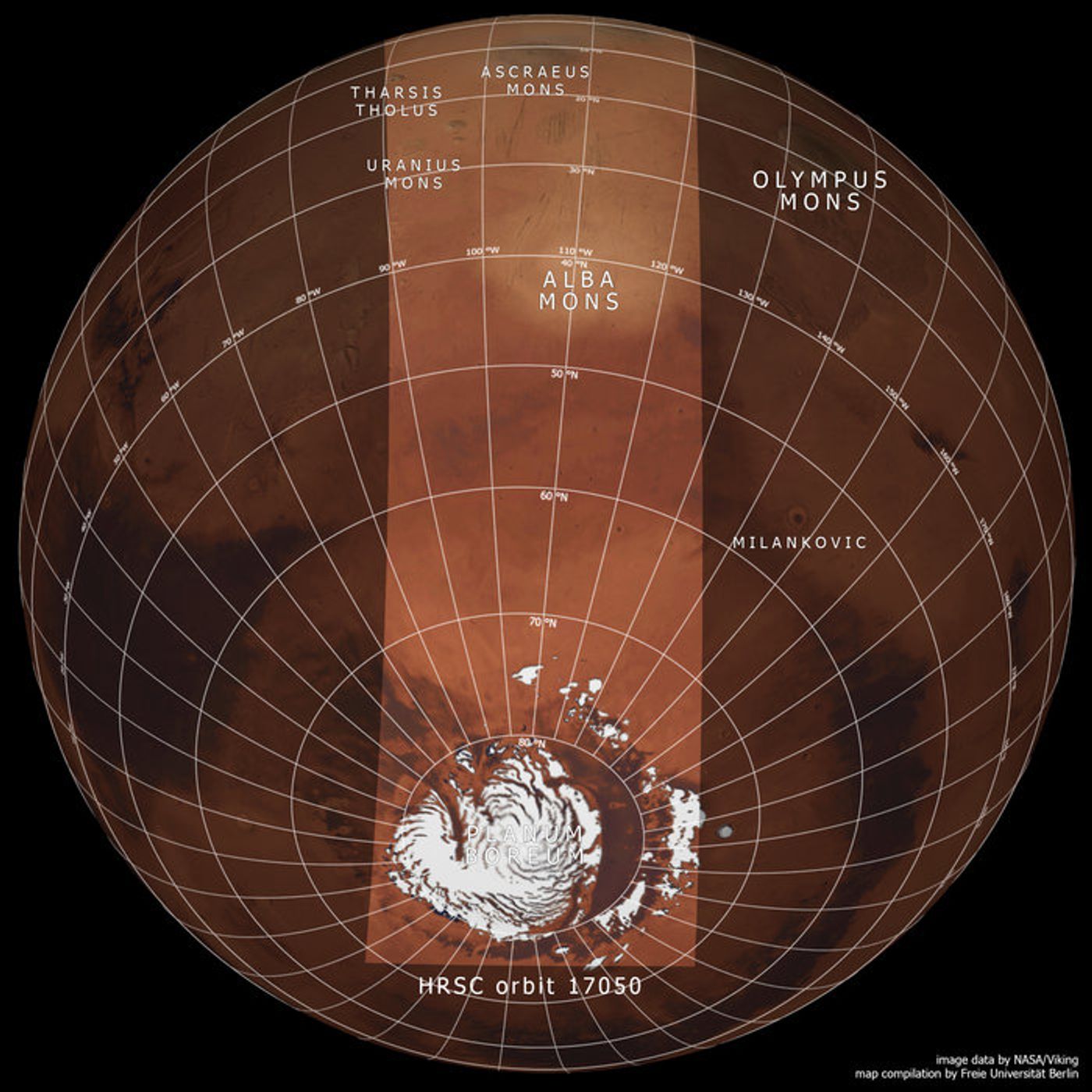Strikingly-Beautiful Image Depicts an Upside-Down Mars
Most images depicting other planets in the solar system illustrate the North at the top and South at the bottom. A picture snapped by the European Space Agency’s Mars Express spacecraft on June 19th, 2017, on the other hand, does just the opposite.
Image Credit: ESA/DLR/FU Berlin, CC BY-SA 3.0 IGO
A public statement released by the ESA elucidates how the Mars Express spacecraft grabbed this image as it was traveling from North to South during a routine calibration event. Furthermore, each of the onboard high-resolution stereo camera’s nine channels made this level of unprecedented detail possible.
Still not entirely sure what you're looking at? You can use the image below for reference:
Image Credit: NASA/Viking, FU Berlin
Related: Is Mars' environment more hostile than initially thought?
At the bottom of the picture, you can discern Mars’ dark and mysterious North pole. There, you can recognize traces of water ice and dust. Remnants of evaporated carbon dioxide and water vapor produced by the warmth of the spring season form the cloudy white regions just South of the North pole.
After the temperatures cool down during the fall and winter months, these evaporated gasses retreat back to where they came, and solid ices build back up at Mars’ North pole all over again.
The top of the image shows off Mars’ bright and clear equatorial region, which tells a starkly-different story about the red planet’s environment. If you look closely enough, you can make out a bevy of volcanoes and surface imperfections. One of the largest in the frame is Alba Mons, which stretches more than 1,000 kilometers in diameter.
Although Mars Express merely snapped this photograph for equipment calibration purposes, its value doesn't stop there. Fascinating perspectives like this one allow planetary scientists to study neighboring planets and develop theories concerning their history, formation, and habitability, among other things.
Given just how much each picture of Mars continues to amaze us, it should be interesting to see what future images might uncover as rovers and spacecraft alike explore its environment. After all, we still have a lot to learn before we send some of the first human visitors there.
Source: ESA










